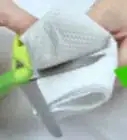This article was co-authored by wikiHow staff writer, Jessica Gibson. Jessica Gibson is a Writer and Editor who's been with wikiHow since 2014. After completing a year of art studies at the Emily Carr University in Vancouver, she graduated from Columbia College with a BA in History. Jessica also completed an MA in History from The University of Oregon in 2013.
There are 15 references cited in this article, which can be found at the bottom of the page.
The wikiHow Video Team also followed the article's instructions and verified that they work.
This article has been viewed 150,226 times.
Learn more...
White-out, also known as liquid paper or correction fluid, is used to cover up mistakes on paper. When you brush a thin coat of white-out onto paper, it forms a permanent bond, so it’s almost impossible to remove white-out from a document without destroying it. Fortunately, you might have better luck getting white-out spills off of your clothes, skin, or furniture, although in some cases the stain might be impossible to remove.
Steps
Removing White-Out Tape from Paper
-
1Get out an eraser designed to remove ink. Look for an erasable pen that has a rubber eraser attached to one end. If you can't find one, try using a classic pink rubber eraser.[1]
- Kneaded erasers or gum erasers that you find at art supply stores don't work very well to remove white-out. Gum erasers crumble too easily and kneaded erasers are designed to lift pencil or graphite.
- Note that this method works for white-out correction tape only. Unfortunately, if you use liquid white-out on paper, you won't be able to remove it.
-
2Rub the eraser back and forth across the white-out tape. Push gently so you don't accidentally tear the paper. Keep erasing until the white-out flakes off and you can brush it away.[2]
- You can also try to scrape the white-out correction tape or fluid using your fingernail or a butter knife. However, it's really easy to accidentally damage the paper, so scrape gently if you try this.
Advertisement -
3Touch-up the writing with fresh ink. When you erased the white-out, the eraser might have lifted some of the ink, too. Go back with the same color ink you used to write with and write over the words that you'd like to be visible.
- Let the fresh ink dry completely before you handle the paper. This way you won't accidentally smear the ink.
Taking White-Out off Skin
-
1Let the white-out dry on your skin completely before you try to remove it. Trying to wipe away white-out while it’s still wet will just leave you with a bigger mess. Luckily, white-out dries quickly. Some brands dry in as little as 60 seconds, although you may need as much as 5 minutes for some spills.[3]
- You can tell the white-out is dry when it doesn’t feel tacky or soft to the touch anymore.
-
2Squirt a little liquid dish soap on a dry paper towel. You just need enough soap to cover the surface of the white-out stain on your skin. For a smaller stain, just a squirt should be enough, although if you spilled a whole bottle, you might need to use a little more.[4]
- Do not wet the paper towel before adding the soap, as it will dilute the soap, making it less effective.
- Any liquid soap will work for this, but dish soap is especially good at breaking down stains like white-out.
-
3Rub the soapy paper towel over the white-out stain on your skin. The dish soap should dissolve the white-out in just a few seconds. You will start to see white streaks or flakes mixed in with the soap residue left behind from the paper towel.[5]
- If you spilled a lot of liquid paper, you might have to scrub the area a little harder, and it might take longer.
-
4Wipe away the soapy stain with a clean, damp paper towel. You should see the remnants of the white-out stain coming off of your skin onto the second paper towel. If any white-out remains, repeat the process.[6]
- If you have a large stain, it may be easier to work in small sections rather than trying to tackle the whole thing at once.
-
5Rinse your skin thoroughly with water. Once you have completely gotten rid of the stain, rinse the area with fresh water to ensure there is no soap or white-out residue left behind. Otherwise, these substances may irritate your skin.
Getting White-Out Stains out of Clothes
-
1Allow the white-out to dry before you attempt to remove the stain. If you try to clean the white-out before it’s dried, it will smear and make a bigger mess. Instead, allow the stain to dry completely, which should only take about 5 minutes, depending on the size of the spill.[7]
- If you’re in a hurry, rub the area with an ice cube to help it harden more quickly.[8]
-
2Use a butter knife to scrape away as much of the white-out as possible. Once the white-out has completely hardened, try scraping it away with a dull, flat tool like a butter knife. Try to push the flat edge of the knife under the edge of the stain until the liquid paper flakes away. While some residue will probably remain on the fabric, this should remove the bulk of the white-out buildup on your clothes.[9]
- You could also use a paint scraper, a credit card, or any other dull, flat surface.
- Don’t use anything sharp like a butcher’s knife or scissors, which could tear the garment.
-
3Read the label on the white-out to see if it’s water-based or oil-based. Some brands of liquid paper are water-based, which means they’ll come out easily with normal washing, while you'll have to treat oil-based stains with a stain remover.[10]
- If the product is water-based, it will usually say so in the product name or be clearly advertised on the label. If the label doesn’t specify which one it is, it’s probably oil-based.
-
4Place the garment in the washing machine if the white-out is water-based. Wash the garment according to its care label, just as you normally would. If the garment is made of a durable fabric, you may want to wash it in warm water to help dissolve the stain, but it may come out in cold water as well.[11]
- Check to ensure the stain is gone before you put the clothes in the dryer, otherwise, the stain could set in and may become permanent.
-
5Treat oil-based stains with a stain remover made for laundry. Saturate the stained area and let the stain remover sit for about a minute. After the minute is up, rub the white-out spot with a clean cloth to see if the stain has dissolved. If it has, wipe away as much as possible, then launder your garment as usual.[12]
- If the stain is still present, apply more stain remover and wipe it off again after 1 minute.
- You can also sponge amyl acetate, which is a powerful stain remover used by dry cleaners, onto the stain. Amyl acetate is very strong, so test it on an inconspicuous area first and work in a ventilated area.[13]
-
6Apply laundry detergent directly to the spot if the stain is still present. If you've already treated an oil-based white-out stain but it's still present, coat the whole area with the detergent and let it soak in for about 5 minutes. When the time is up, blot the white-out stain with a clean cloth until the stain is completely removed.
- If you’re using powdered laundry detergent, you should wet the clothes before treating the stain. This will help the powdered detergent dissolve and soak into the fabric.[14]
- If you prefer liquid detergent, there is no need to wet the garment first.
-
7Wash the garment as usual once the stain is removed. Once you've successfully removed an oil-based white-out stain, you can wash your clothing the way you normally do. If you’re not already sure, read your garment’s care tag to determine exactly how it should be washed. Depending on the type of material, either place the clothes in the washing machine or wash them by hand.[15]
Cleaning Other Surfaces
-
1Dab the spot with rubbing alcohol if you spill liquid paper on carpet. Pour some rubbing alcohol on a clean cloth and quickly blot the spot from the outside in, which will help keep it from spreading around. If you need to, switch to a new cloth once you have gotten the bulk of the stain up, so you don’t keep transferring it back to the carpet.
- Rubbing alcohol evaporates quickly. This makes it an ideal solvent for use on carpets, since most other cleaners have to be washed away.[16]
- Try to treat the stain as quickly as possible. Once it sets in, it can be very difficult to remove.
-
2Treat stains on hard, color-safe surfaces with paint remover. Certain plastics, metals, or tiles may be durable enough to withstand paint remover or turpentine, but you’ll need to test a small, inconspicuous area first to make sure you don’t ruin the surface. Pour the paint remover onto a clean rag, then wipe away the spot, working from the outside in.[17]
- Flush the area with water when you’re finished.
- If you’re using paint remover or turpentine, work in a well-ventilated area, avoid prolonged skin exposure, and do not allow the chemicals to splash into your eyes.
-
3Treat stains on wood with a cleaner for sticky substances. There are a number of commercial products which are made to remove glue or other sticky materials from wood. If you spill white-out on a wood floor or a piece of wood furniture, dampen a cloth with one of these cleaners and blot the liquid paper from the wooden surface.[18]
- Use a clean cloth to wipe away the residue as you work so the white-out doesn’t smear.
-
4Use a citrus-based cleaner to remove oil-based liquid paper stains from upholstery. If you've spilled white-out on your sofa, scrape off as much of the dried residue as possible, then spray a cloth with a citrus-based stain remover and dab at the stain. Work from the outside in, applying more cleaner as needed.
- It may help to use an upholstery brush to help loosen the fibers on your upholstery.
Community Q&A
-
QuestionHow do you get white out off of walls?
 wikiHow Staff EditorThis answer was written by one of our trained team of researchers who validated it for accuracy and comprehensiveness.
wikiHow Staff EditorThis answer was written by one of our trained team of researchers who validated it for accuracy and comprehensiveness.
Staff Answer wikiHow Staff EditorStaff AnswerYou may be able to gently scrape the white out away with sandpaper or the edge of a coin. If the wall isn’t painted, try a solvent, such as acetone. Unfortunately, any method you use could potentially damage the paint on your wall, so you might need to patch the area with a little fresh paint.
wikiHow Staff EditorStaff AnswerYou may be able to gently scrape the white out away with sandpaper or the edge of a coin. If the wall isn’t painted, try a solvent, such as acetone. Unfortunately, any method you use could potentially damage the paint on your wall, so you might need to patch the area with a little fresh paint. -
QuestionIs white out toxic on skin?
 wikiHow Staff EditorThis answer was written by one of our trained team of researchers who validated it for accuracy and comprehensiveness.
wikiHow Staff EditorThis answer was written by one of our trained team of researchers who validated it for accuracy and comprehensiveness.
Staff Answer wikiHow Staff EditorStaff AnswerMost forms of correction fluid aren’t toxic, and it won’t hurt you to get a little on your skin. However, it can be stubborn and hard to remove, so avoid getting it on your skin as much as possible. In case of a spill, it will typically come off your skin if you scrub it with a little soap and water.
wikiHow Staff EditorStaff AnswerMost forms of correction fluid aren’t toxic, and it won’t hurt you to get a little on your skin. However, it can be stubborn and hard to remove, so avoid getting it on your skin as much as possible. In case of a spill, it will typically come off your skin if you scrub it with a little soap and water. -
QuestionHow do you remove correction fluid from metal?
 wikiHow Staff EditorThis answer was written by one of our trained team of researchers who validated it for accuracy and comprehensiveness.
wikiHow Staff EditorThis answer was written by one of our trained team of researchers who validated it for accuracy and comprehensiveness.
Staff Answer wikiHow Staff EditorStaff AnswerTypically, a little acetone-based nail polish remover will do the trick. However, be cautious using acetone if the metal surface is painted, since it could wipe away the paint. In this case, you can try a gentler solvent, like rubbing alcohol, but test it in an inconspicuous area first to make sure it doesn’t damage the paint.
wikiHow Staff EditorStaff AnswerTypically, a little acetone-based nail polish remover will do the trick. However, be cautious using acetone if the metal surface is painted, since it could wipe away the paint. In this case, you can try a gentler solvent, like rubbing alcohol, but test it in an inconspicuous area first to make sure it doesn’t damage the paint.
Warnings
References
- ↑ https://youtu.be/YCS-i3DH1Fc?t=12
- ↑ https://youtu.be/YCS-i3DH1Fc?t=18
- ↑ https://youtu.be/gS_s6TTry0o?t=38
- ↑ https://youtu.be/gS_s6TTry0o?t=25
- ↑ https://youtu.be/gS_s6TTry0o?t=47
- ↑ https://youtu.be/gS_s6TTry0o?t=68
- ↑ https://www.cleaninginstitute.org/clean_living/stain_removal_chart.aspx#32
- ↑ https://extension2.missouri.edu/mp663-3#greasy
- ↑ https://www.cleaninginstitute.org/clean_living/stain_removal_chart.aspx#32
- ↑ https://www.goodhousekeeping.co.uk/institute/household-advice/stain-removal/remove-correction-fluid
- ↑ https://www.goodhousekeeping.co.uk/institute/household-advice/stain-removal/remove-correction-fluid
- ↑ https://extension2.missouri.edu/mp663-3#greasy
- ↑ https://americandrycleaner.com/articles/using-amyl-acetate-1
- ↑ https://fleming.ca.uky.edu/files/stain_removal.pdf
- ↑ https://fleming.ca.uky.edu/files/stain_removal.pdf
- ↑ https://extension.illinois.edu/stain/staindetail.cfm?ID=107
- ↑ https://www.goodhousekeeping.co.uk/institute/household-advice/stain-removal/remove-correction-fluid
- ↑ https://ask.metafilter.com/113215/Liquid-Paper-on-clothng
- ↑ https://www.goodhousekeeping.co.uk/institute/household-advice/stain-removal/remove-correction-fluid#
- ↑ https://www.shopbic.com/bic-life#1
- ↑ https://americandrycleaner.com/articles/using-amyl-acetate-1
- ↑ https://americandrycleaner.com/articles/using-amyl-acetate-1
About This Article
Although you can’t really remove white-out from paper, you should be able to clean it off your clothes, skin, or other surfaces. If you’ve got white-out on your clothes, wait for it to dry and scrape away as much as you can with a dull knife. Then, check the label of the white-out to see if it’s water- or oil-based. You can clean water-based white-out in a washing machine, and you can get oil-based white-out off using a stain remover. If you’ve got white-out on your skin, rub it with dish soap and a paper towel, then rinse it off. Treat carpet stains with rubbing alcohol and a clean cloth. For hard surfaces, use paint remover. Just make sure you test it on a small patch first. For more tips, including how to remove white-out stains from upholstery, read on!
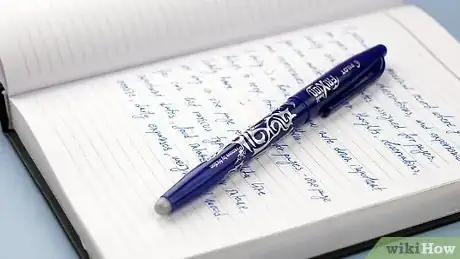
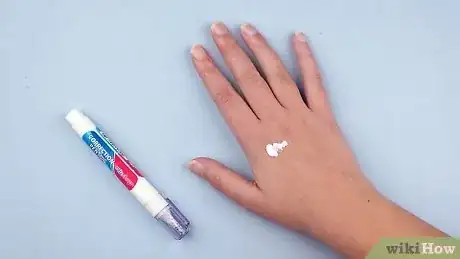
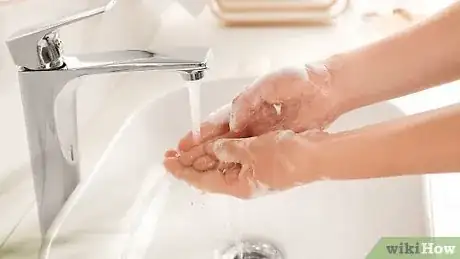
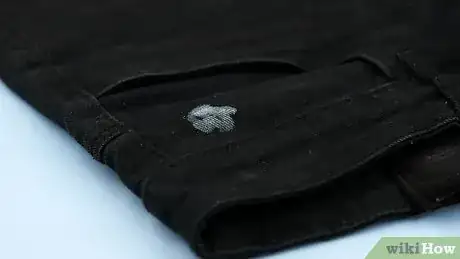
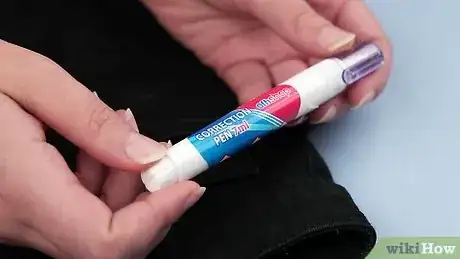
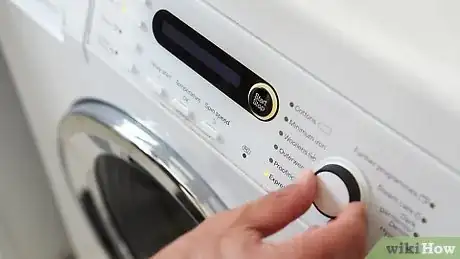
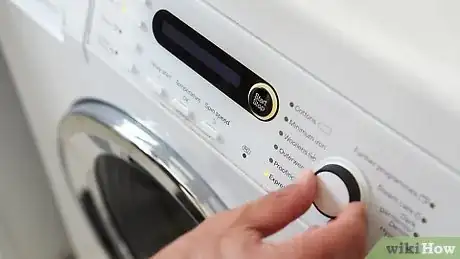
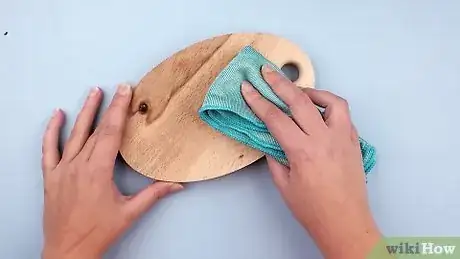
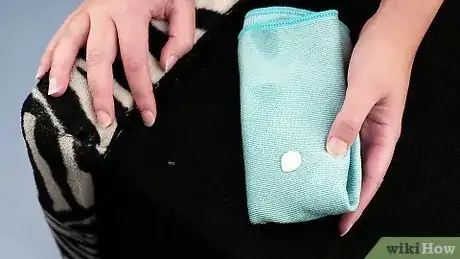
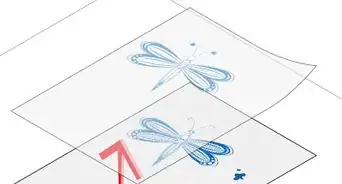
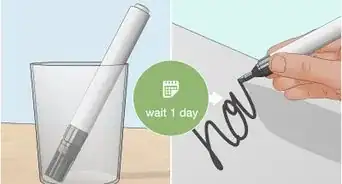
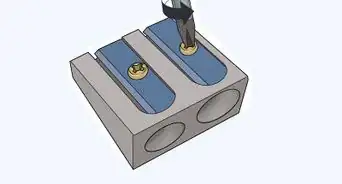
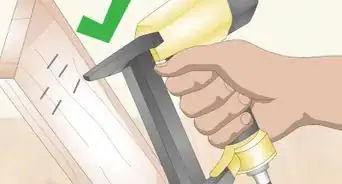
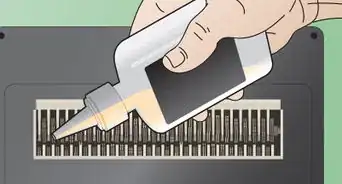
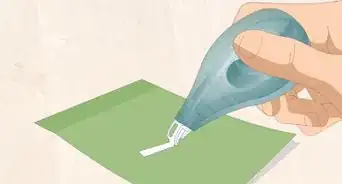
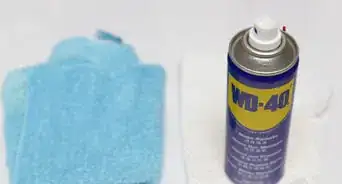
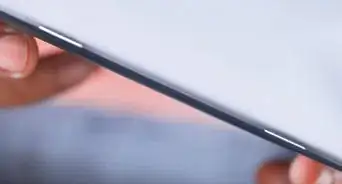
-Step-22.webp)











